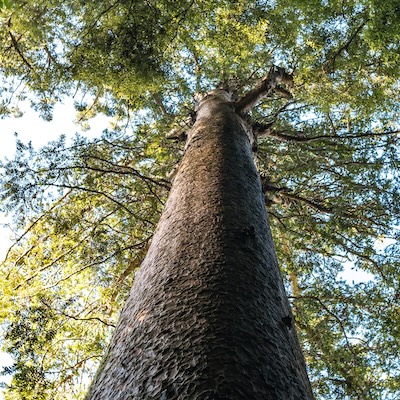
Shortly after publication I received a message from a reader (Thanks Paddy) recommending I get hold of a book called "Quest For The Kauri" by E.V. Sale. A week or so later, thanks to the wonders of online shopping, I am the new owner of a copy which was once part of the Titirangi branch of the Waitemata Public Libraries. It still has the card in the back, and was last taken out on 27th November 1989.
I've learned a lot from it so far. When the Royal Navy found Kauri in New Zealand they appointed agents whose sole job it was to source the wood for masts and spars. The famous topsail schooner Huia was built at Aratapu and launched in 1894. Her keel was a single length of Kauri especially cut to a length of 33.5M in the Kaipara Forests. Unfortunately she went up in flames in 1951.
The thing that stands out though, is quite how much wood was taken from the ancient forests of the upper North Island. With little concern over the damage inflicted on the natural landscape, much of it was clear-felled to make way for farmland upon which the subsequent prosperity of this country was built. Early settlers were promised a grant of forty acres if they paid their own passage to New Zealand. Often they would arrive to find it completely covered with trees, of which only one species was of any use to them. In those days only substantial trees were seen as desirable, in fact Rimu, Kahikatea, Totara, and Puriri were routinely burned off as having no value. The Kauri would be used for houses, dams, ships, bridges, railways, even paving blocks.
From the supposedly enlightened vantage point of the present, that initial, rampant exploitation of the land might seem ill-judged, even vandalistic. At the time it must have looked much more like a joyful and exciting embrace of the abundant resources which were being discovered. Such is often the nature of progress: we jump in and use up the good stuff and then bemoan the lack of it when it's gone. The problem with cutting down big trees is that it takes so long to grow them. I've got another book somewhere on the subject of sustainable forest management in New Zealand, and that talks in terms of cycles of five hundred years. You've got to be seriously forward-thinking to to be working to that kind of plan. Perhaps the coming changes in farming and food production will allow for more land to be reforested in years to come. Even so, you don't have to travel far, even in Cambridge, to see young Kauri busy growing along with many other native species. I can scarcely imagine the town over which they might one day tower.